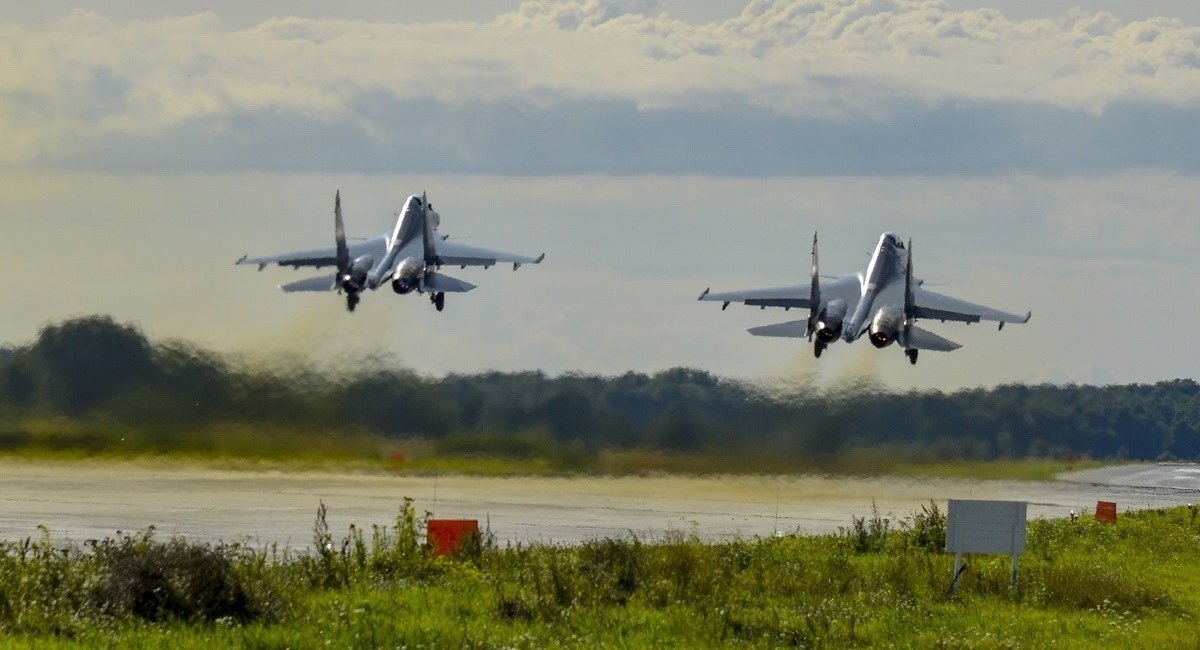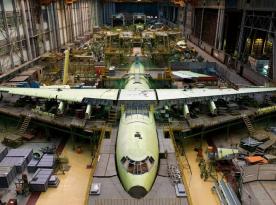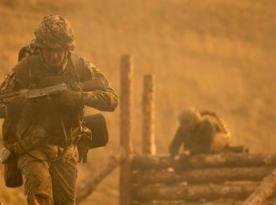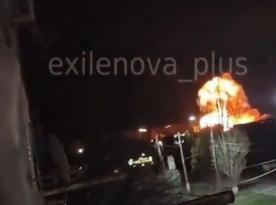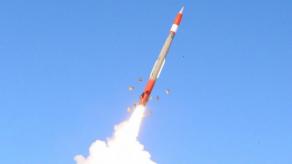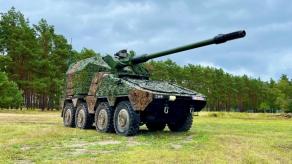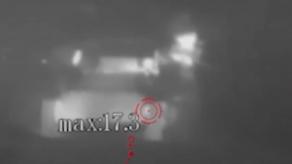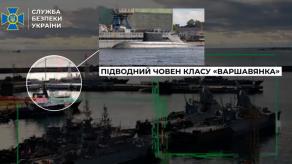The so-called russian Aerospace Forces began an urgent rebasing of aircraft from air bases in the occupied Crimea after a series of explosions that covered the peninsula and affected the air base Saki and Gvardeyskoye.
According to the report by the Main Directorate of Intelligence of the Ministry of Defense of Ukraine (HUR MOU), russians have recently transferred fighter jets and front-line bombers to airfields in the Kuban.
Read more: 'Strike' in a Bowling Club in Crimea from the Ukrainian Armed Forces: What Defense Minister Reznikov was Hinting About
In particular, yesterad, August 17, three Su-35s (23rd Fighter Aviation Regiment) and three Su-34s (559th Bombardment Aviation Regiment) left Belbek Airfield, which has not yet been hit, to the air base near the settlement of Primorsko-Akhtarsk in Krasnodar Krai.
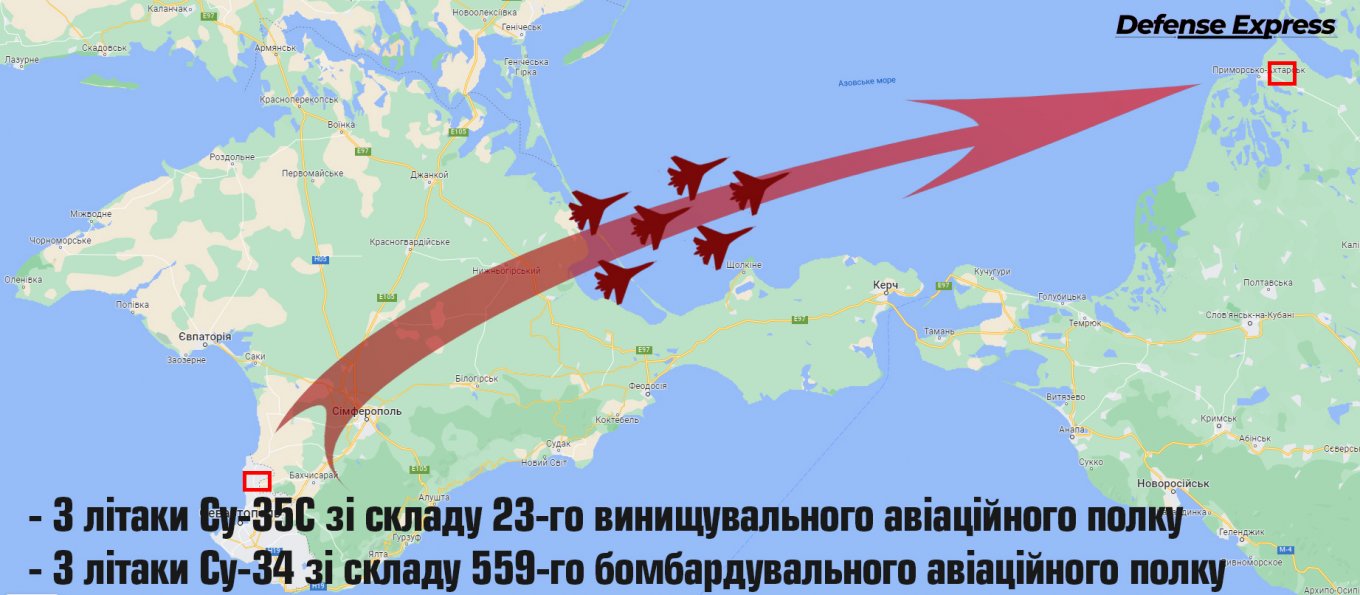
Five more Su-27 or Su-30SM, which are part of the Crimean 38th Fighter Aviation Regiment, were re-based in Krymsk.
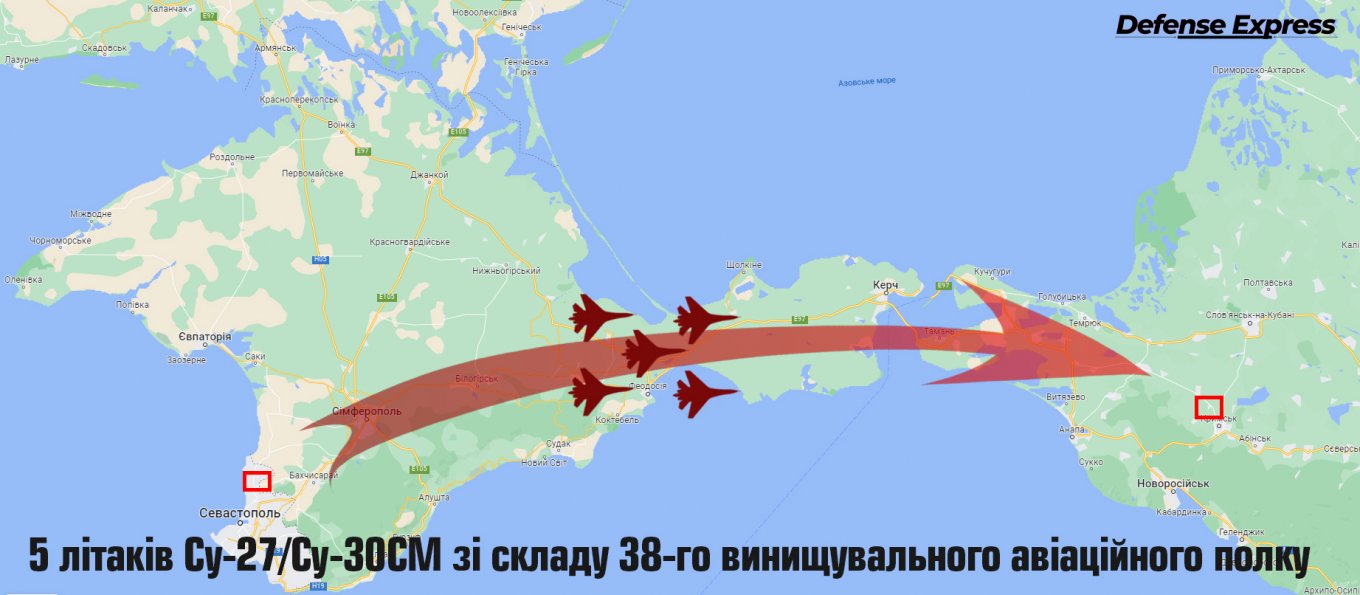
Two more MiG-31s flew to Kushchevsk, and one MiG-31 all the way to Gelendzhik. According to the same message from the Main Directorate of Intelligence of the Ministry of Defense of Ukraine, during the flight on one of these fighters there was a fire on board, probably the main power plant and navigation equipment.
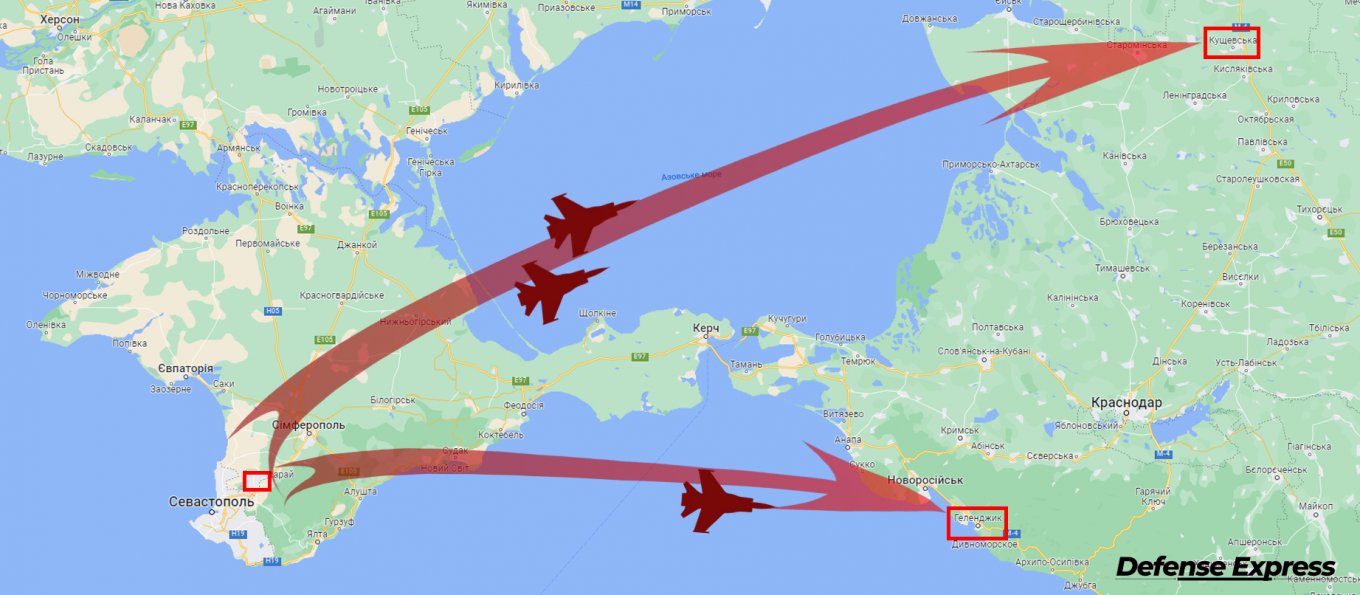
The Kacha Air Base, where the helicopters of the 318th separate mixed aviation regiment were based, dispersed and sent three Ka-27s to the Khersones Airfield south of Sevastopol and to the city itself. Also 8 unnamed helicopters flew to Krasnodar, which actually makes it impossible to use them due to the small combat radius of the helicopters.
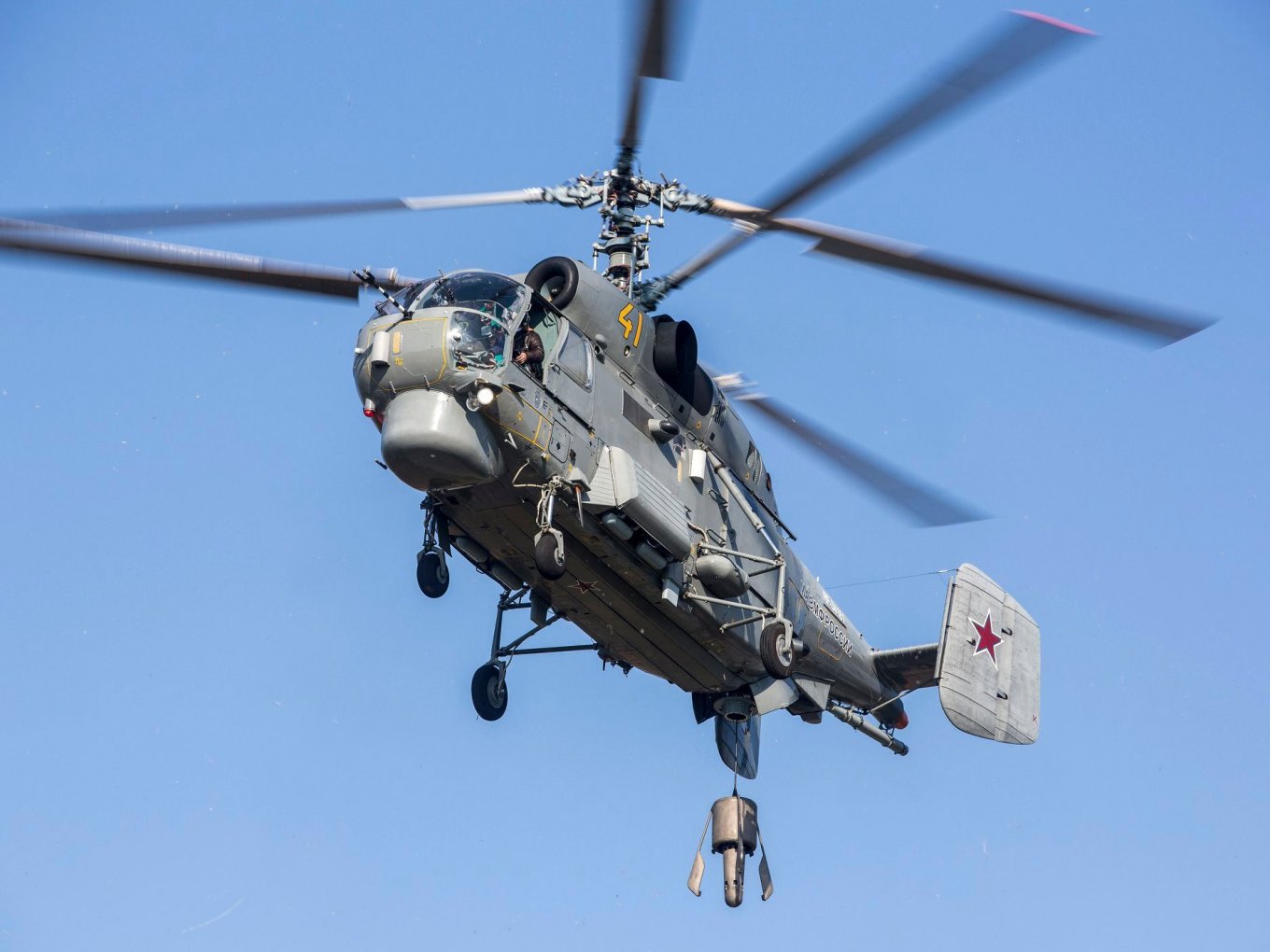
It is also interesting that five days before the attack on the Gvardeyskoye Airbase, which took place on August 16, five additional Su-27 or Su-30 aircraft from the 38th Fighter Aviation Regiment (Belbek) had been concentrated there as well as five Su-34s from the 559th Bombardment Aviation Regiment (N.P. Morozovsk, Rostov Oblast). But the HUR MOU does not report on the departure of any aircraft from the Gvardeyskoye Air Base.
At the same time, the rebasing of the enemy's aircraft to airfields that are twice as far from the front line is quite positive news. First of all, the time required to launch strikes and the speed of reaction to perform operational tasks increases. Secondly, the number of hours in the air increases, which leads to a faster decrease in the resource. Thirdly, the aircraft must take more fuel, which reduces the combat load.
Read more: 2,200 Airstrikes: Ukrainian Air Force Speaks Up on How Their Su-24s and Su-25 Repeatedly Destroy russians in August (Video)




